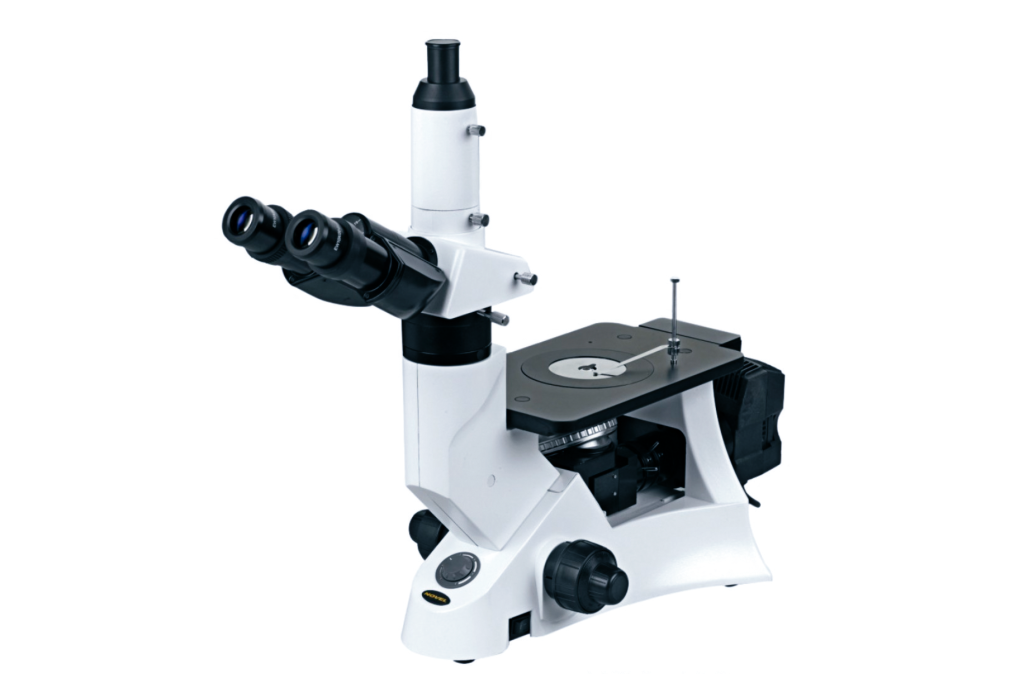Principles and Applications of Polarizing Microscopes
Polarizing microscopy is a microscope used to identify the optical properties of substances’ fine structures. Substances with birefringence can be clearly distinguished under a polarizing microscope. While staining methods can be used for observation, some substances require the use of polarizing microscopes.
The key feature of polarizing microscopes is the transformation of ordinary light into polarized light for examination, distinguishing substances as uniaxial (isotropic) or biaxial (anisotropic) by examining their optical properties.
Birefringence is a fundamental characteristic of crystals, making polarizing microscopes widely applicable in fields such as mineralogy and chemistry. In biology, many structures also exhibit birefringence, necessitating the use of polarizing microscopes for differentiation. In plant biology, it aids in identifying fibers, chromosomes, spindle fibers, starch granules, cell walls, and the presence of crystals in cells and tissues. In plant pathology, polarizing microscopy helps identify changes in tissue chemistry caused by pathogenic invasion.
In human and animal studies, polarizing microscopy is commonly used to identify bones, teeth, cholesterol, nerve fibers, tumor cells, striated muscle, and hair.
- Uniaxial and Biaxial Nature: Substances are classified as uniaxial (isotropic) or biaxial (anisotropic) based on how light behaves when passing through them.
- Polarization Phenomenon: Light waves can be categorized as natural light or polarized light. Polarized light consists of vibrations in a single direction, with variations such as linear polarization observed in biaxial substances under polarizing microscopes.
- Generation and Purpose of Polarization: The crucial components of a polarizing microscope are the polarizing devices – the polarizer and analyzer. Traditional Nicol prisms were previously used, but modern polarizing microscopes employ artificial polarizing mirrors made of Herapathite crystals. These mirrors enable the production of linearly polarized light when ordinary light passes through them.
Polarizing microscopes consist of two polarizing mirrors – the polarizer placed between the light source and the specimen (called the polarizer) and the analyzer located between the objective and eyepiece (called the analyzer). Aligning the vibration directions of the polarizer and analyzer determines the brightness or darkness of the field of view. The microscope aims for an orthogonally aligned state for optimal examination.
Performance of the NIM-100 Inverted Metallurgical Microscope:

- Infinite optical system provides outstanding optical performance.
- Suitable for observing and identifying the organizational structure of various metals and alloys, featuring a comfortable and stable microscope body structure, an efficient and convenient stage design, as well as an easy and quick operation. Ideal for long-term, effortless operation in school and industrial laboratories.
Technical Specifications of the NIM-100 Inverted Metallurgical Microscope:
| Observation Head | Three-observation head, inclined at 30 degrees, interpupillary distance adjustable from 48 to 75mm | |
| Eyepiece | High eyepoint, extra-wide field eyepiece EW10X/20 | |
| Infinity-Corrected Plan Achromatic Objectives | 2.5X/0.08/∞/- | WD 11.7mm |
| 2.5X/0.08/∞/- | WD 10.7mm(λ glass) | |
| 4X/0.1/∞/- | WD 28mm | |
| 5X/0.12/∞/- | WD 15.4mm | |
| 10X/0.25/∞/- | WD 10mm | |
| 20X/0.4/∞/0 | WD 5.8mm | |
| 40X/0.6/∞/0 | WD 2.90mm | |
| 50X/0.75/∞/0 | WD 0.32mm | |
| 100X/0.80/∞/0 | WD 2mm | |
| Converter | Five-hole converter | |
| Stage | Flat stage with a specimen presser | |
| Coaxial X, Y movement knobs on the right-hand side with mechanical moving scale, movement range 120X78mm | ||
| Rectangular double-layer movable stage 226X178mm, movement range 50X50mm | ||
| Extension board | ||
| Focusing System | Coaxial coarse and fine focusing mechanism, focusing achieved by the up and down movement of the converter. Coarse adjustment travel per rotation is 37.7mm, fine adjustment travel per rotation is 0.2mm | |
| Illumination | 6V/30W halogen lamp, Kohler illumination | |
| Filters | Blue, yellow, green, ground glass filters | |
| Polarizing Device | ||
| Photography Accessories | ||
| Camera Interface | Standard C interface | |